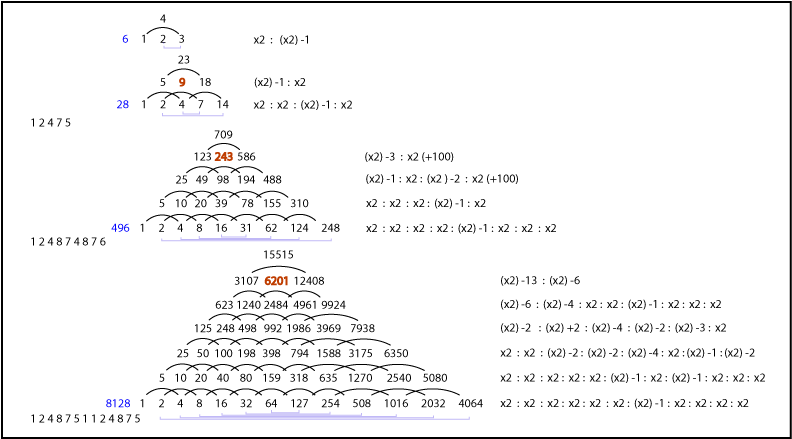Above we may observe that the reduction-sums
of the digits in the sieve-diagrams all reduce to 9 at their mid-top
scale — with the exception of 6, which is unique. Digit-summing
the perfect number itself always produces 10, again with the exception
of the first.
9 is the true identity of ‘the before
of oneNess [entirety]’ . This is not merely a Zero —
and means something akin to ‘three trines, invisibly embraced
by her’ — ‘the transentient membrane enclosing
the trineTrineTrine’.
23
perfect numbers

